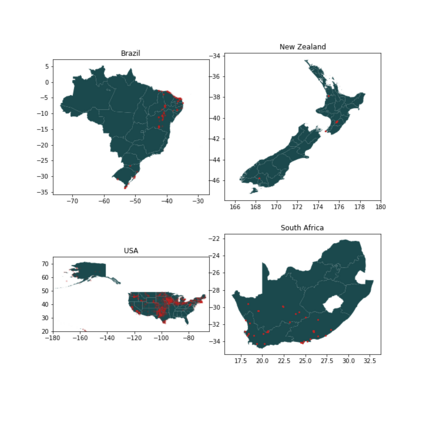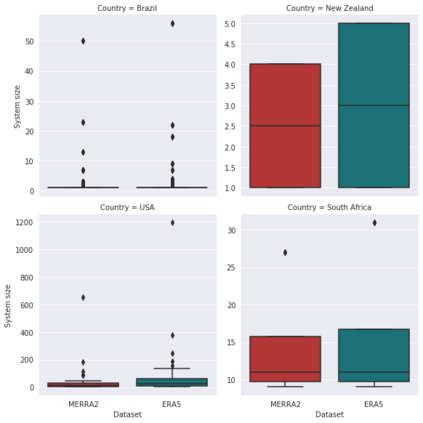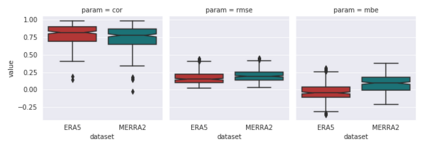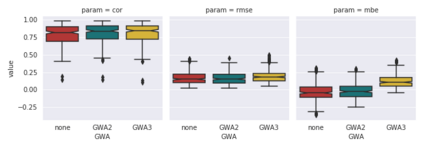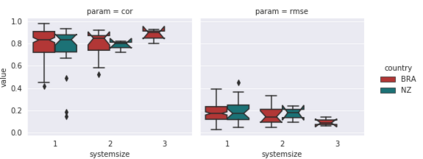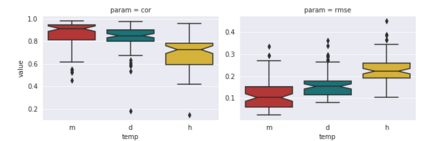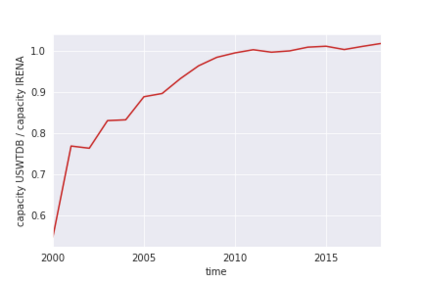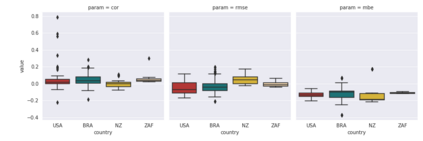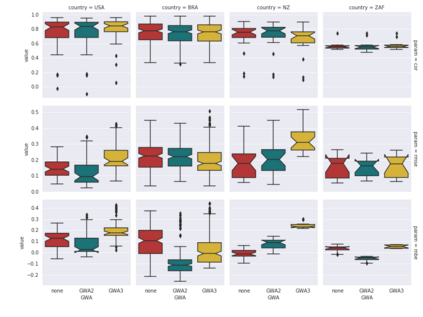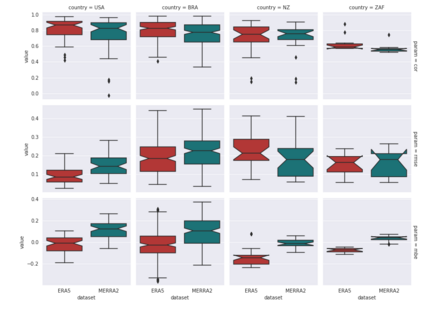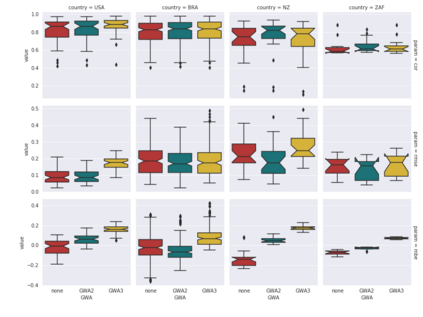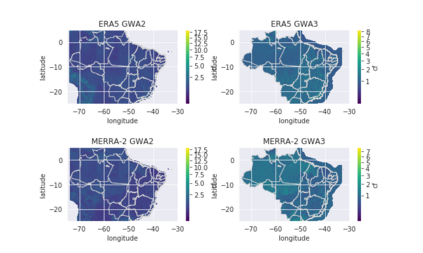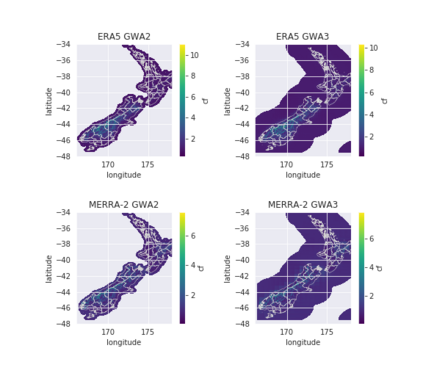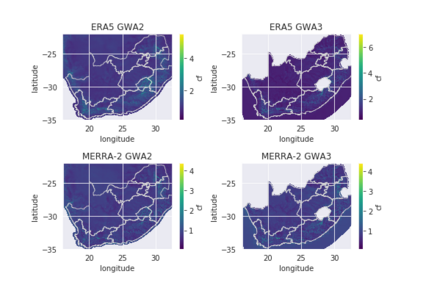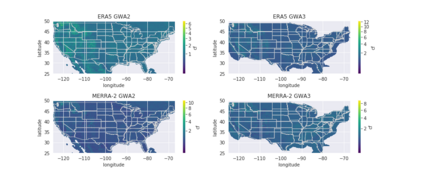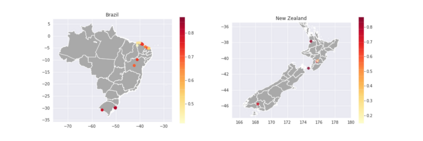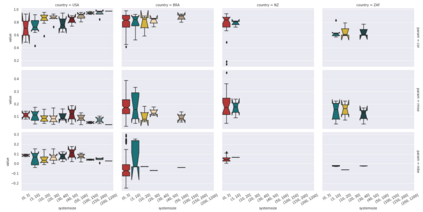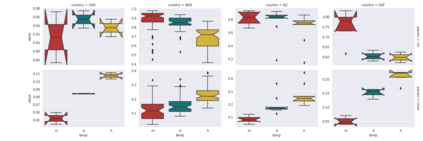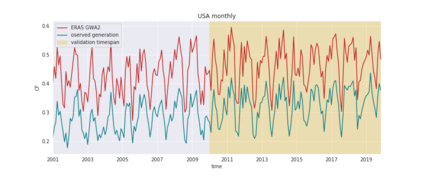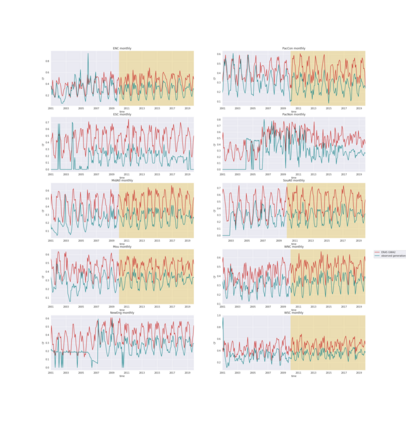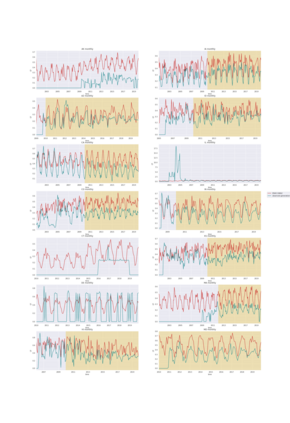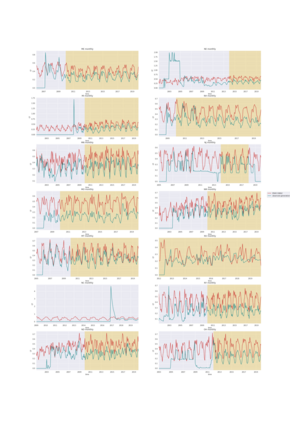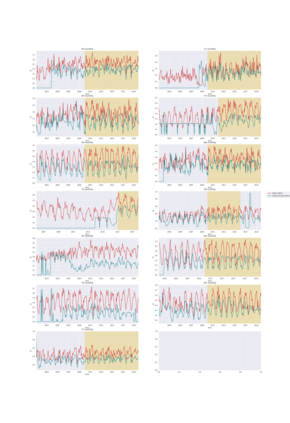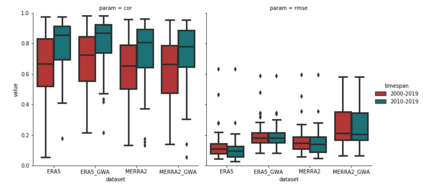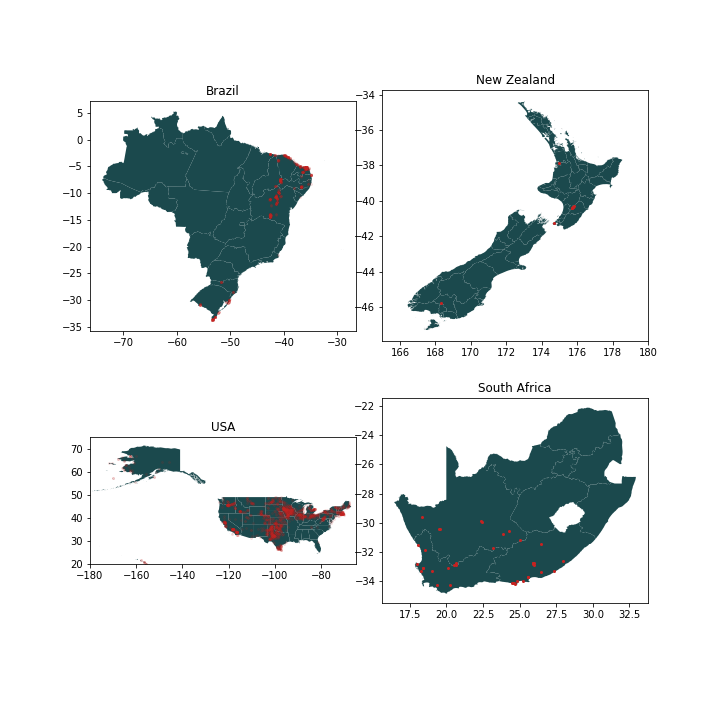Reanalysis data are widely used for simulating renewable energy and in particular wind power generation. While MERRA-2 has been a de-facto standard in many studies, the newer ERA5- reanalysis recently gained importance. Here, we use these two datasets to simulate wind power generation and evaluate the respective quality in terms of correlations and errors when validated against historical wind power generation. However, due to their coarse spatial resolution, reanalyses fail to adequately represent local climatic conditions. We therefore additionally apply mean bias correction with two versions of the Global Wind Atlas (GWA) and assess the respective quality of resulting simulations. Potential users of the dataset can also benefit from our analysis of the impact of spatial and temporal aggregation on simulation quality indicators. While similar studies have been conducted, they mainly cover limited areas in Europe. In contrast, we look into regions, which globally differ significantly in terms of the prevailing climate: the US, Brazil, South-Africa, and New Zealand. Our principal findings are that (i) ERA5 outperforms MERRA-2, (ii) no major improvements can be expected by using bias-correction with GWA2, while GWA3 even reduces simulation quality, and (iii) temporal aggregation increases correlations and reduces errors, while spatial aggregation does so only consistently when comparing very low and very high aggregation levels.
翻译:重新分析数据被广泛用于模拟可再生能源,特别是风能发电。虽然MERA-2在许多研究中已成为一个不实际的标准,但最新的ERA5重新分析最近也变得重要。在这里,我们利用这两个数据集模拟风力发电,并评估在与历史风能发电相比验证时各自在关联和错误方面的质量。然而,由于其空间分辨率粗略,再分析未能充分反映当地气候条件。因此,我们进一步运用了两个版本的全球风力图(GWA)的偏差纠正,并评估了相应的模拟质量。数据集的潜在用户也可以从我们对模拟质量指标的空间和时间汇总影响的分析中受益。虽然进行了类似的研究,但主要覆盖欧洲的有限地区。相比之下,我们考察各区域,这些区域在普遍气候方面差异很大:美国、巴西、南非和新西兰。我们的主要结论是:(i) ERA5超越了MERA-2,因此评估了相应的模拟质量。(ii) 数据集的潜在用户也可以从我们对模拟质量和时间汇总对模拟质量的影响进行的分析中受益。虽然全球气象数据系统2的数值不断降低,但全球航空的比值却不断降低。

